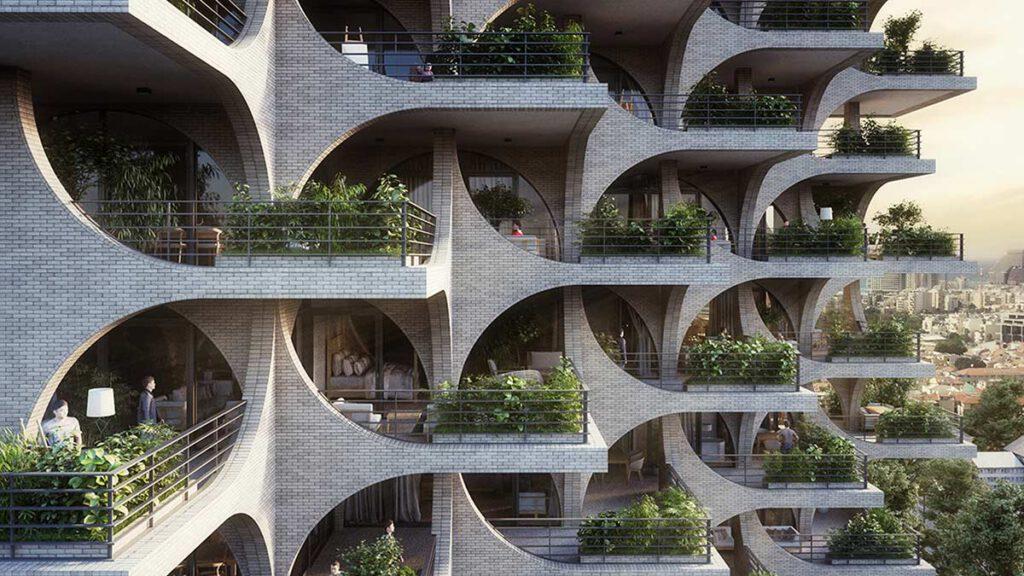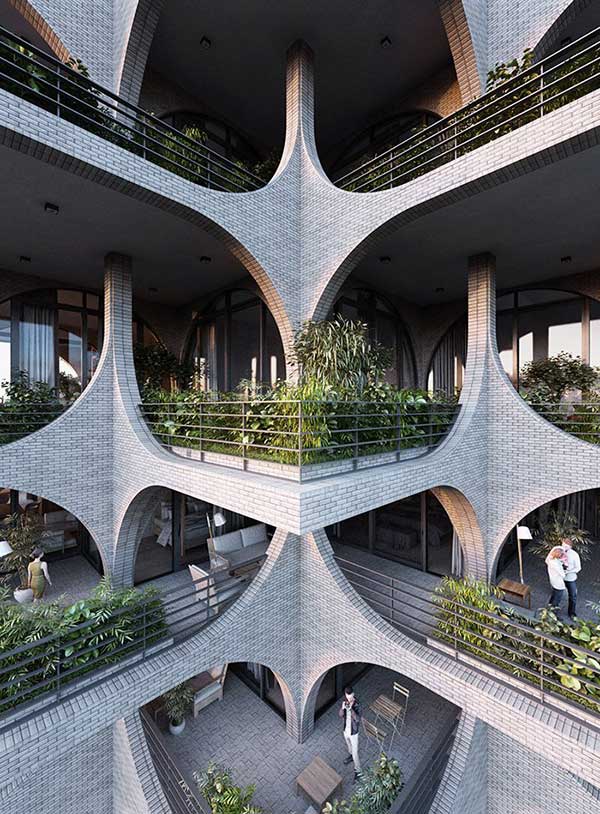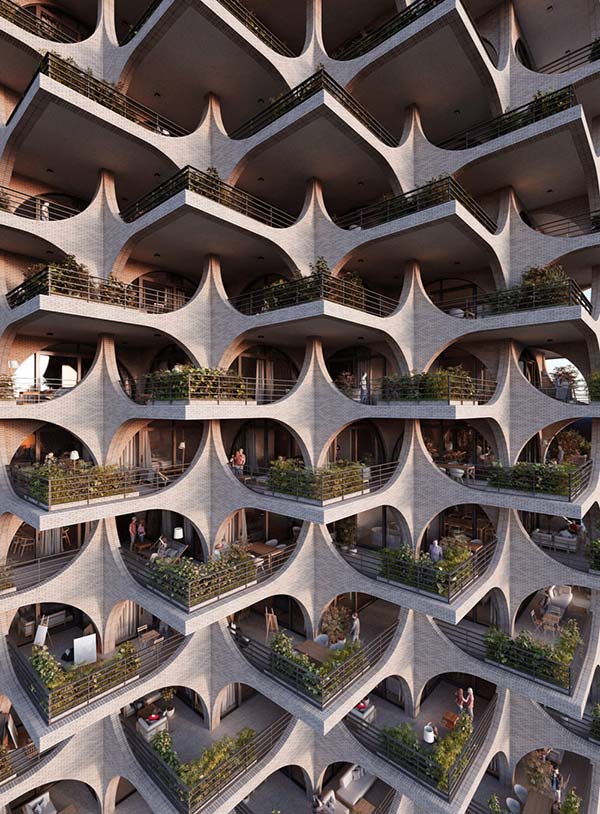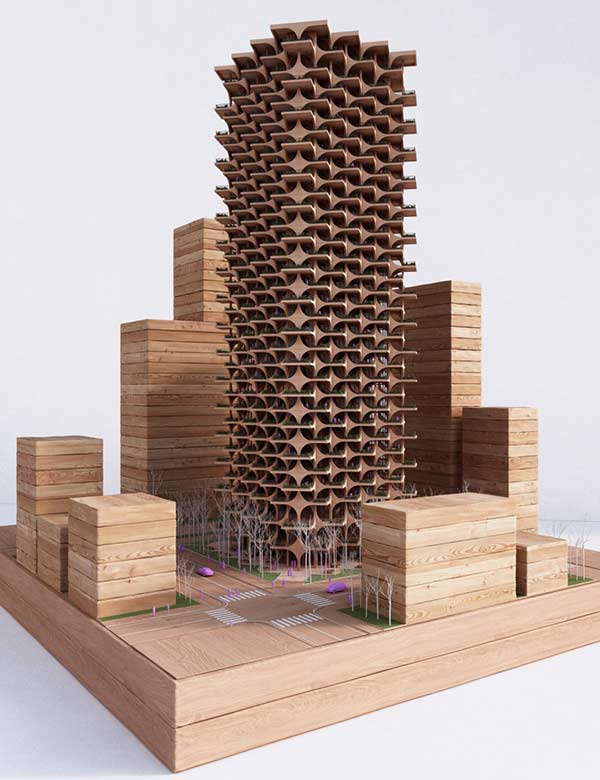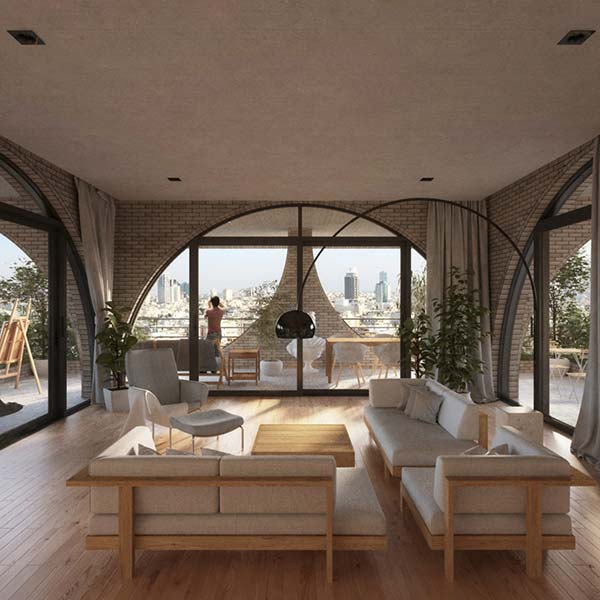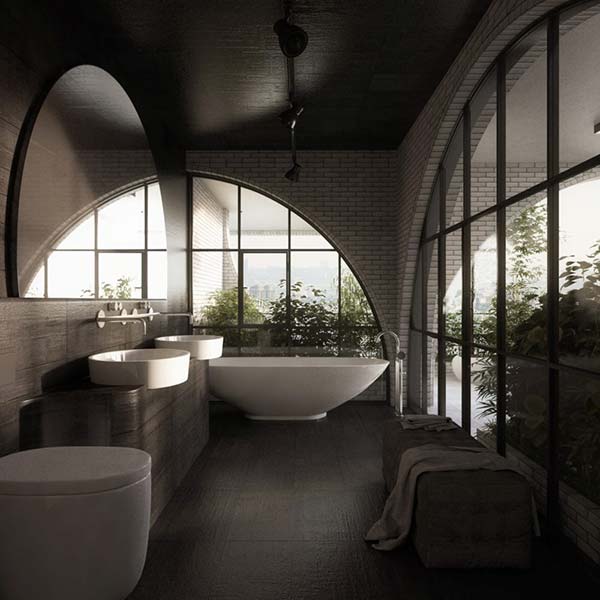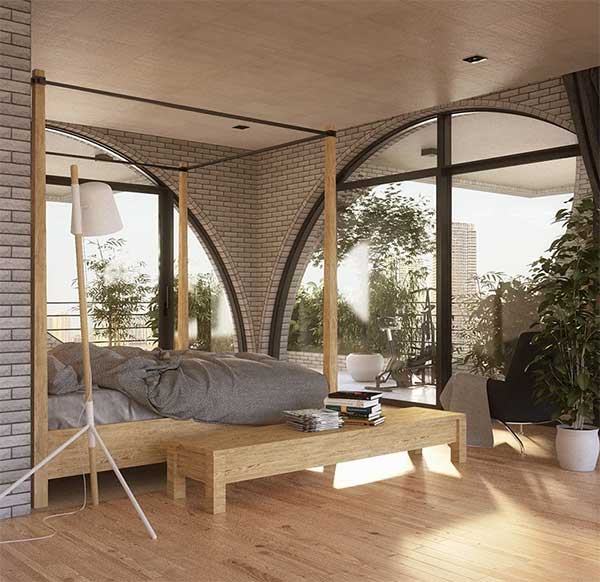Stacked in favour
A tribute to the Bauhaus era, a constructional climate concept, and vertical neighbourhoods. The Tel Aviv Arcades by Studio Precht take a fresh look at skyscraper design.
People who like to hide away in their homes behind towering evergreens will be out of place in this high-rise. The terraces with their lush greenery are designed to benefit from maximum exposure. Nonetheless, they are stacked in such a way that each terrace casts shade on its neighbour. The residents’ privacy was sacrificed for the sake of the community’s climate concept, yet the advantages of this vertical allotment concept may well outweigh these sacrifices. The Tel Aviv Arcades are another example of how the Austrian Studio Precht promotes rural, neighbourly proximity in a dense, urban setting.
Although construction of this tower is not actually restricted to a specific city, the design is intended for Ramat Gan, a large city just outside Tel Aviv. These pioneering architects have designed a residential tower that reflects the architectural heritage of Tel Aviv for a German real estate developer.
Paying tribute to Tel Aviv’s Bauhaus era
This legacy includes the White City, which was awarded UNESCO world heritage status in 2003. It is the site of thousands of Bauhaus buildings that are among the city’s architectural highlights. The architects adapted the designs to Israel’s hot climate and placed the buildings on pilotis to achieve cooling and back ventilation. The typical horizontal windows preferred by Le Corbusier were replaced with narrow, long balconies, the glass facades with window bands to maximize the amount of shade.
With its clear design-language of arches and straight lines, the Tel Aviv Arcades can be seen as a tribute to the Bauhaus era.
Chris Precht, architect
The architects at Studio Precht took a similar approach to their design and were also guided by the Bauhaus principles. “For architects, Tel Aviv is an inspiring city as it features the largest display of buildings from the Bauhaus. An era that was driven by openness, formal clarity and rational geometry,” explains Studio Precht. “With its clear design-language of arches and straight lines, the Tel Aviv Arcades can be seen as a tribute to the Bauhaus era and a formal connection to its Bauhausian neighbourhood.”
Terraces as a shading device
Besides their aesthetic references, the buildings from the Bauhaus era also supplied inspiration for the concept behind this tower. Sophisticated stacking of the terraces supplied the architects with an energy-saving concept linked to the building’s structural design. Whereas the interiors of traditional skyscrapers usually require high-energy air conditioning due to their extreme exposure to the sun, Studio Precht is able to use natural cooling here.
“Shading is one of the most important criteria in a high-rise with balconies,” says Chris Precht, who is renowned for eco-design and radical creations in cooperation with his wife Fei Precht. The apartments in the 32-storey residential block are entirely surrounded by terraces. These terraces are also shading devices that prevent direct sunlight and provide natural cooling for the interiors. “It allows the building to be open to its surroundings, but not exposed to the Mediterranean climate,” adds Precht.
The building can be open to its surroundings without being exposed to the Mediterranean climate.
Chris Precht, architect
The structural design consists of brick-clad, three-dimensional prefabricated concrete elements that display links to the architectural environment. At a height of 116 metres, the tower offers 17,650 m² of living area.
Extended space through transparency
Every single room has direct access to the outdoor area, which is segregated by arches. You can see outside from every room. “Through this transparency the terraces can be seen as a continuing extension of the interior spaces,” explains Studio Precht. The office has previously caused a stir with its social-distancing park and its tree house that was inspired by animated films.
The stacked terraces dominate the facade’s measured appearance and are intended to reflect the pulsating life in Tel Aviv.
The terraces are a vertical neighbourhood and they reflect life in the city.
Chris Precht, Studio Precht
The allotment feeling created by the stacked terraces was definitely intentional. The architects see the outdoor areas as a kind of hanging private yard, where residents can come into contact with their neighbours. “In a way the terraces are a vertical neighbourhood and they reflect the positive atmosphere of the life in the city.”
Text: Gertraud Gerst
Translation: Rosemary Bridger-Lippe
Renderings: Studio Precht, Studio Penda
